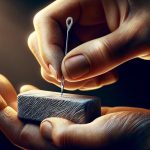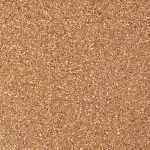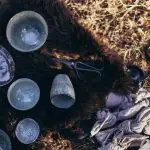Have you ever wondered if fabric scissors can cut leather? Well, the answer might surprise you.
In this article, we will explore the possibilities and limitations of using fabric scissors to cut leather.
We will discuss the key differences between leather and fabric scissors, factors to consider when cutting leather with fabric scissors, techniques for a clean cut, tips for maintaining sharpness, and common mistakes to avoid.
So, let’s dive in and find out if fabric scissors can indeed handle leather.
Table of Contents
Understanding Leather and Fabric Scissors
Yes, fabric scissors can cut leather, but it may not produce the cleanest or most precise results. While fabric scissors are designed to cut through various types of fabric, they may struggle with the toughness and thickness of leather. Leather cutting tools, on the other hand, are specifically designed to cut through leather efficiently and with precision.
Leather cutting tools, such as leather shears or leather knives, have sharp blades that are specifically designed to handle the unique characteristics of leather. They are often made of high-quality steel, ensuring durability and longevity. These tools provide clean and precise cuts, allowing you to create professional-looking leather projects.
To maintain the performance and longevity of your leather cutting tools, it is important to take proper care of them. After each use, make sure to clean the blades to remove any residue or debris. You can use a soft cloth or brush to wipe away any dirt or dust. Additionally, it is recommended to periodically sharpen the blades to maintain their cutting effectiveness.
Key Differences Between Leather and Fabric Scissors
When it comes to using scissors for cutting leather and fabric, there are a few key differences to keep in mind.
One important factor is material compatibility limitations. Leather scissors are specifically designed to handle the toughness and thickness of leather, while fabric scissors are better suited for cutting through softer fabrics.
Another difference lies in the blade sharpness and durability. Leather scissors often have a sharper and more robust blade to effectively cut through the dense leather, while fabric scissors have a finer blade that is better for precise cutting on delicate fabrics.
Lastly, cutting technique variations also play a role. Leather scissors typically require a stronger and more controlled cutting technique, whereas fabric scissors can be used with a lighter touch and more fluid cutting motion.
Material Compatibility Limitations
Cutting leather with fabric scissors may result in limited material compatibility. Fabric scissors are designed for soft, flexible materials like fabric, but they may struggle with tough, thick leather. Leather requires special cutting tools designed for its unique properties. Leather shears or rotary cutters with leather blades have sharper edges and stronger construction for cutting dense leather. Using fabric scissors on leather can cause frayed edges, uneven cuts, and potential damage to both the scissors and the leather. To ensure clean, precise cuts and maintain the integrity of your leather projects, it is recommended to invest in proper cutting tools for leather.
Blade Sharpness and Durability
Using the wrong tool for the job can result in dull blades and decreased durability.
When it comes to cutting leather, blade sharpness is crucial. Leather is a tough material that requires a sharp cutting edge to achieve clean and precise cuts. Dull blades will not only make the task more difficult but can also damage the leather by tearing or fraying the edges.
To ensure optimal blade sharpness, it is important to use scissors specifically designed for cutting leather. These scissors are typically made with high-quality steel blades that are hardened and sharpened to withstand the demands of cutting through tough materials like leather.
Cutting Technique Variations
There are different ways to achieve clean and precise cuts on tough materials like leather. When it comes to cutting angles and hand positioning, it is important to find a technique that works best for you. Here is a table to help you understand different cutting techniques:
| Technique | Cutting Angle | Hand Positioning |
|---|---|---|
| Straight Cut | 90 degrees | Steady and firm |
| Curved Cut | Varies | Flexible and controlled |
| Diagonal Cut | 45 degrees | Angled and precise |
Experiment with these techniques to find what feels comfortable and allows for accurate cuts. Remember to always use sharp scissors and maintain a steady hand for the best results. With practice, you’ll be able to achieve clean and precise cuts on leather every time.
Factors to Consider When Cutting Leather With Fabric Scissors
When cutting leather with fabric scissors, there are several factors to consider.
First, the material of the scissor blades plays a crucial role in determining their effectiveness. Look for blades made from strong and durable materials like stainless steel or titanium.
Additionally, leather thickness and texture should be taken into account, as thicker and textured leather may require sharper and sturdier scissors.
Lastly, proper scissor maintenance is essential to ensure optimal performance and longevity, so make sure to regularly clean and sharpen your scissors.
Scissor Blade Material
Did you know that fabric scissors are not typically recommended for cutting leather due to the difference in blade material? Fabric scissors are designed to cut through delicate fabrics, while leather requires sharper and stronger blades.
Here’s why fabric scissors may not be suitable for cutting leather:
-
Scissor blade strength: Fabric scissors are usually made with lighter and less durable materials such as stainless steel or titanium. These materials may not be strong enough to cut through the tough and thick texture of leather, causing the blades to become dull or even break.
-
Fabric scissor limitations: The blades of fabric scissors are often serrated or have a micro-serrated edge. These blade designs are more suitable for gripping and cutting through fabric fibers, but may struggle to make clean cuts on leather, resulting in jagged edges and uneven lines.
-
Risk of damaging fabric scissors: Attempting to cut leather with fabric scissors can significantly reduce their lifespan. The tough nature of leather can cause excessive wear and tear on the blades, rendering them less effective for their intended purpose of cutting fabrics.
To ensure clean and precise cuts, it’s recommended to use specialized leather scissors or other tools specifically designed for cutting leather.
Leather Thickness and Texture
To achieve clean and precise cuts on thick and textured materials like leather, you’ll need specialized tools designed for the job. Leather cutting tools are specifically designed to handle the unique characteristics of leather, such as its thickness and texture. These tools ensure that you can achieve accurate cuts without damaging the material.
One popular leather cutting tool is the leather knife. It features a sharp, pointed blade that allows for precise cutting, especially in tight corners and curves. Another commonly used tool is the rotary cutter, which is perfect for straight cuts and long, continuous lines.
When choosing the right leather cutting tool, it’s essential to consider the thickness and texture of the leather. Thicker leather requires a tool with a stronger blade, while textured leather may require a tool with a serrated edge to prevent slipping and ensure a clean cut.
Proper Scissor Maintenance
To maintain the proper function of your scissors, it’s important to regularly sharpen the blades and lubricate the pivot point. Proper scissor maintenance ensures that your scissors continue to cut smoothly and effectively.
One essential aspect of maintenance is cleaning your scissors regularly. Use a soft cloth to remove any dirt or debris that may have accumulated on the blades or pivot point.
Additionally, it is crucial to sharpen the blades regularly. Dull blades can make cutting difficult and can even damage the fabric or material you are working with. You can sharpen the blades yourself using a sharpening stone or take them to a professional for sharpening.
Lastly, don’t forget to lubricate the pivot point with a drop of oil to ensure smooth movement.
Techniques for Cutting Leather With Fabric Scissors
There are a few techniques for cutting leather with fabric scissors. While fabric scissors are not specifically designed for cutting leather, they can still be used with some limitations.
First, make sure your fabric scissors are sharp and in good condition. Dull scissors will not cut through leather effectively.
Next, use a template or pattern to guide your cuts. This will help ensure accurate and precise cuts.
When cutting the leather, apply steady pressure and use short, controlled cuts. Avoid trying to cut through the leather in one long motion, as this can cause the leather to shift or tear.
It’s also important to note that thick or heavy-weight leather may be more difficult to cut with fabric scissors. In such cases, you may need to use specialized leather scissors or a utility knife.
Remember to take breaks and rest your hands if needed to prevent fatigue.
Tips for Maintaining the Sharpness of Fabric Scissors for Leather Cutting
Keep in mind that regularly sharpening your fabric scissors is essential for maintaining their effectiveness when cutting leather. Here are some tips to help you maintain the sharpness of your fabric scissors for cutting leather:
-
Clean your scissors after each use: Leather can leave residue on the blades, which can dull them over time. Make sure to wipe off any debris or residue with a clean cloth or paper towel after each use.
-
Store your scissors properly: Avoid tossing your fabric scissors into a drawer or letting them come into contact with other objects. This can cause the blades to become dull or damaged. Instead, store them in a protective sheath or hang them up in a designated spot.
-
Use a sharpening tool: Invest in a good quality sharpening tool specifically designed for fabric scissors. Regularly sharpening your scissors will help keep the blades sharp and ensure clean, precise cuts when working with leather.
Common Mistakes to Avoid When Cutting Leather With Fabric Scissors
One common mistake to avoid when using fabric scissors to cut leather is applying too much force, which can lead to jagged or uneven cuts. Leather is a thick and durable material, so it requires a different approach compared to cutting fabric. Proper technique is crucial to achieve clean and precise cuts when working with leather.
Another common mistake is using dull scissors. Fabric scissors are designed to cut through soft materials like fabric, and using them on leather can quickly dull the blades. Dull scissors will not only make the cutting process more difficult but can also result in rough and uneven edges. It is essential to keep a separate pair of scissors specifically for cutting leather to ensure sharp blades.
Not paying attention to the grain of the leather is also a mistake to avoid. Leather has a natural grain pattern, and cutting against the grain can weaken the material and cause it to stretch or tear. Always make sure to align the scissors with the grain when cutting leather to maintain its structural integrity.
Lastly, rushing through the cutting process can lead to mistakes. Take your time and use smooth, steady strokes when cutting leather with fabric scissors. Rushing can cause the scissors to slip or veer off course, resulting in uneven or crooked cuts.
Alternatives to Fabric Scissors for Cutting Leather
Now that you’re aware of the common mistakes to avoid when cutting leather with fabric scissors, it’s time to explore alternative cutting tools and techniques for leather. While fabric scissors may not be the best choice for leather cutting, there are several other options that can provide clean and precise cuts.
Here’s a table comparing some alternative cutting tools and their advantages:
| Cutting Tool | Advantages |
|---|---|
| Rotary Cutter | Provides smooth, straight cuts and is ideal for straight lines |
| Leather Shears | Specifically designed for cutting leather, ensuring clean cuts |
| Utility Knife | Versatile tool that can be used for various leather cutting tasks |
When using these alternative cutting tools, it’s important to follow proper leather cutting techniques to achieve the best results. Here are some key techniques to keep in mind:
- Use a cutting mat to protect your work surface and ensure smooth cutting.
- Mark your cutting lines clearly with a leather marker or chalk.
- Apply steady pressure while cutting to maintain control and precision.
- Consider using a metal ruler or straight edge to guide your cuts for straight lines.
Conclusion
In conclusion, fabric scissors can cut leather, but it is important to consider the key differences between leather and fabric scissors.
When cutting leather with fabric scissors, factors such as blade length, sharpness, and technique should be taken into account. It is also crucial to properly maintain the sharpness of fabric scissors for leather cutting.
Avoiding common mistakes and exploring alternative tools for cutting leather can also lead to better results. So, with the right approach and care, fabric scissors can be a viable option for cutting leather.
- How Does Ring Spun Cotton Affect Garment Fit and Shape Retention? - August 13, 2024
- What Are the Challenges in Producing Ring Spun Cotton? - August 13, 2024
- Is Ring Spun Cotton Suitable for Plus-Size Clothing? - August 13, 2024






